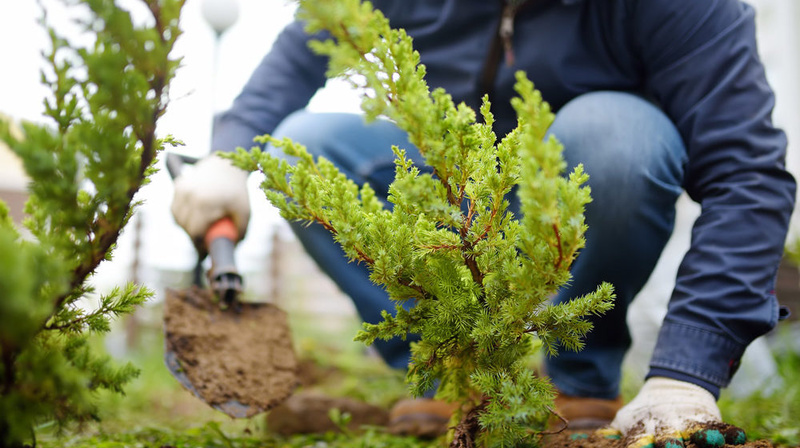
Your Shrub Guide, Part 2: Planting and Care
As a follow-up to our shrub planning and selection blog, we present to you our guide for shrub planting and care. Prepare the soil and planting sites, plant your shrubs properly, and know what new shrubs need when it comes to water, fertilizer, and pest control.
We’re in the heart of the shrub-planting season. Our last blog outlined considerations for shrub planning and selection.
So, you know what you’re going to plant. Now what? We encourage homeowners to take the time to prepare planting sites, properly establish shrubs in the ground, and provide appropriate care to ensure a long and healthy life for their shrubs.
Prepare the Planting Site
Set your shrubs up for success with proper site preparation. Both sandy soil and clay will benefit from enrichment with organic matter, like compost, peat moss, and manure. Check the soil pH and adjust to your plants’ requirements if needed.
Make sure the soil has adequate drainage and mound up the site to help if needed. Consider planting in raised beds if the area is perpetually wet. If your house has no gutters, avoid planting near the roof’s dripline to ensure the soil stays in place.
Planting
- Create a hole that is the same depth as the root ball but at least twice its diameter.
- Remove the shrub from its pot very gently.
- Place the plant in its hole, matching the depth it was in its nursery pot or leaving an inch or two above the ground.
- Use the soil you removed from the hole to refill it, adding water as you do so.
- Create a small berm (4 to 6 inches high) around the root ball to hold water and channel it to the roots.
- Water the shrub thoroughly.
- Lay mulch around the shrub, 3 to 4 inches deep. Leave 2-3 inches of space around the base of the plant.
Watering
Unlike established plants, newly planted shrubs need frequent watering to keep the root ball from drying. Even though there’s less evaporation at this time of year, plants quickly dry out due to Florida’s sandy soil pulling water from the root ball.
Check your shrubs daily to assess their watering needs. We recommend hand watering with a hose to ensure you thoroughly soak the soil and moisten the root system (this is where the berm comes in handy).
Keep the soil soaked for at least a few weeks after planting. Shrubs take longer to establish than most people think. Many take several months, and some (like azaleas) take a couple of years. Remulch as needed to keep the mulch layer a few inches thick.
Fertilization
Feed these new plantings now and continue with light feedings every 6-8 weeks through October. Either granular or liquid garden fertilizers will do. The fertilization process is quite simple: spread an even layer over the soil surface under the plant and immediately water to encourage nutrients to reach the roots. Fertilizing over mulch is fine, as the water will move the nutrients into the ground.
Pest Control
As your shrubs become established and begin to produce new growth, watch for pests. Aphids, in particular, are attracted to tender new shoots, and their presence may cause the growth of sooty mold. While the presence of ladybugs may be enough to control any aphid issue, keep a close eye on these pests in case further measures are needed. Soap sprays are usually sufficient in controlling and eliminating an aphid problem.